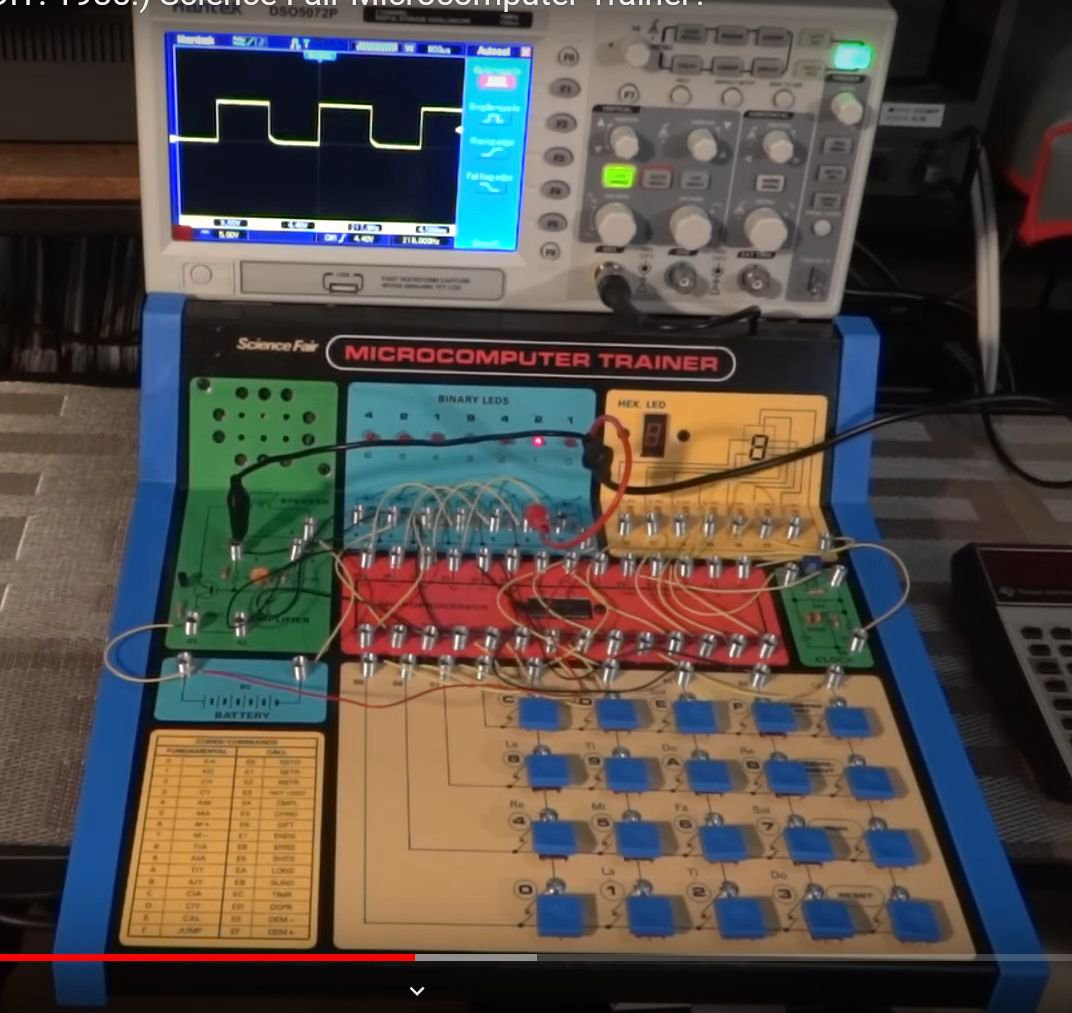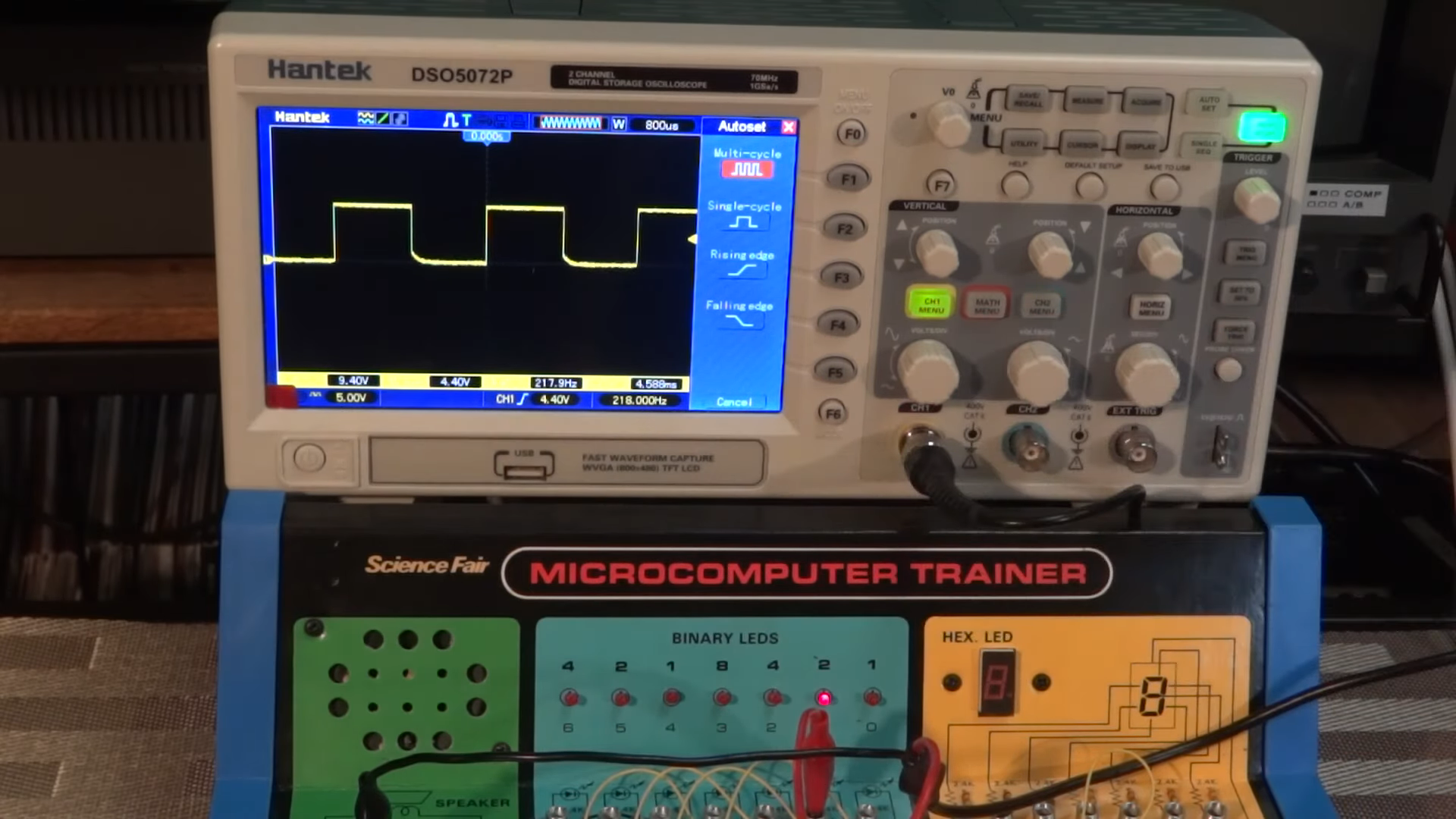Yeah, just not very feasible... I guess the Pico could control a relay-based switch matrix, instead of the spring wires

As for the Science Fair Microprocessor Trainer, it's not really set up for electronics experiments, as there is only one way of wiring it up, really. No GPIO is possible (lack of instructions) - you could use the 7 LEDs for driving some electronics circuit, but for input you would basically need a relay or the like to emulate the "push" of one of the keypad buttons... not fun. There are no extra dedicated GPIO ports, no external address nor data bus, so nothing to extent or enhance, really.


